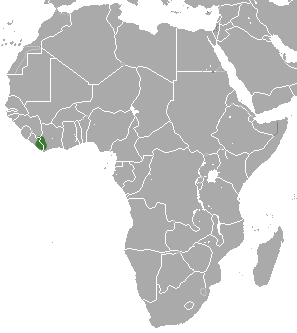Facts About Liberian mongoose
The Liberian mongoose is a small, carnivorous mammal that belongs to the mongoose family. It is the sole member of its genus, Liberiictis. Research indicates that it is closely related to other small, social mongooses, with the banded mongoose being its nearest relative.
This species was first discovered in Liberia in 1958. Initially, little was known about it, but researchers have since determined that its diet primarily consists of earthworms and insects. Although its exact range remains somewhat unclear, it is believed to inhabit areas from Sierra Leone to Côte d'Ivoire, with confirmed sightings in Liberia and Tai National Park in Côte d'Ivoire.
Unfortunately, the Liberian mongoose is considered endangered, primarily due to human activities such as mining, agriculture, hunting, and logging, which have led to significant habitat loss. In appearance, it has a dark brown body with distinctive stripes on its neck and shoulders. Its unique claws and teeth, along with a bushy tail, are adaptations for its insect-heavy diet. Some observations suggest that it may inhabit tree trunks.
The breeding season of the Liberian mongoose coincides with the rainy season, ensuring ample food supply for the offspring.
The International Union for Conservation of Nature (IUCN) has listed the Liberian mongoose as endangered. Habitat destruction and hunting pose significant threats to its survival. Due to its rarity, it was not scientifically described until 1958, and only a few specimens had been collected by 1974.
Interestingly, these mongooses might play a crucial role in their ecosystem. By digging in the forest floor, they potentially influence seed predation and germination. They also host a specific species of chewing louse, adding another layer to their ecological significance.
Political unrest in the regions they inhabit has hindered further research in recent years. However, understanding and protecting this unique mongoose is essential for maintaining the health of their forest habitats.

 Guinea
Guinea